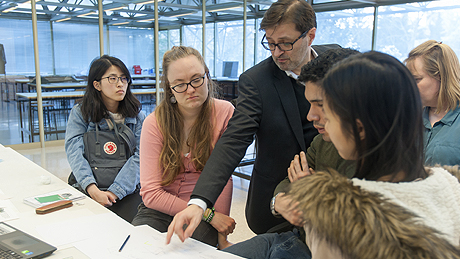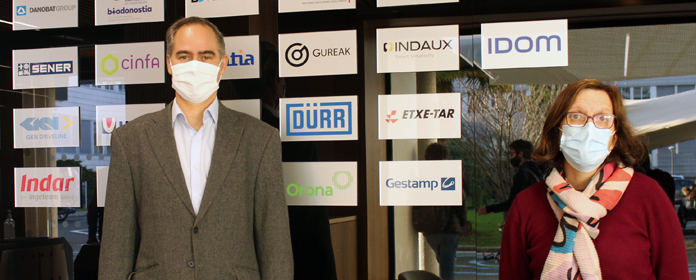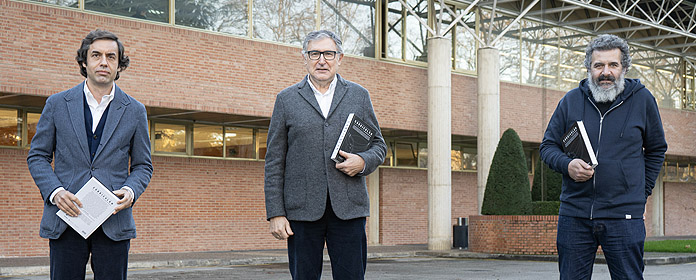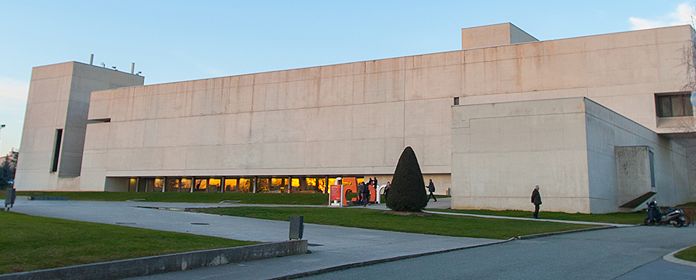“Sustainable Architecture is align with what people need and want”
Two recognised international architects explained their projects during the ‘Sustainability weeks’
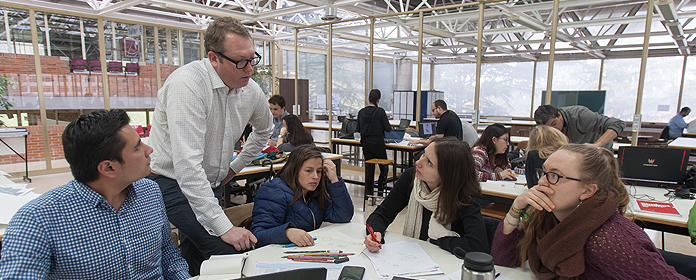
The fifth edition of the Sustainability weeks, organised by the Master’s Degree in Environmental Management and Building Design of the School of Architecture of the University of Navarra, concluded last Friday, 16th of March.
As past years, MDGAE students welcomed other international students from Cardiff University and Technische Universität Dresden (Germany).
This event took place from the 5th to the 16th of March. During these two weeks, students had the opportunity to attend to two conferences from the architects, Byron Stigge and Peter Fisher. These experts in Sustainable Architecture explained their projects and solved questions during their lessons and workshops they taught.
Both agreed in the importance of implement these issues in education programs similar to the MDGAE, and emphasised the “brilliant ideas” students showed during these weeks.
In your opinion, are Governments, companies and society conscious of sustainability issues?
BYRON STIGGE (BS): Governments are very interested in sustainable infraestructures. Some of the principles of sustainability are efficiency, public engagement, environmental issues… Those are issues that people care.
Sustainable goals are the same that people goals. Sustainable architecture is align with what people need and want.
PETER FISHER (PF): Local governments are very much aware of it; more than Central Governments, in my opinion. If companies are concern on this topic? It depends on the company. There are many, one of the most interesting developments in this area are in insurance companies. They have been aware of climate change and the risk for the insurances industries going forward. Some times from companies you get more clear recognition of sustainability issues than you do, in the case of Britain, from Central Government.
Which are the challenges that face this type of infrastructure in european cities/ developing countries?
BS: So many. There are a lot of old laws, even in Europe, which make hard to do new things, to have new ideas. Sometimes you find energy regulations that have been the same for the last 30 years, so it is hard to include new items that didn’t exist when the law was created.
There are also economic challenges, nowadays big systems are being used, increasing budgets. Sustainable infrastructure uses simpler structures, so that economics of these types of structures are better.
Another type of challenge is that in a project, there is a need of having coordinated systems between different agencies.
PF: Probably the biggest two which are extremely difficult are around transport and retrofit. With new constructions, we can build buildings which consum little energy, for example, whereas the biggest problem in european cities that are often old is how you deal with the existing buildings.
In terms of transport, in older cities the infrastructure was not built for mass transport; or there wasn’t a need to move large amount people through the centre of medieval cities. And also, the problem with climate change is, how we deal with adapting to warmer, probably more stormy weather?
Why it is important to integrate sustainability issues in education programs like MDGAE?
BS: It is important to integrate sustainable architecture and engineering with architecture and design students, you’ll find a more global solution to the problems you might face. It is important to see the other person as collaborators and not as competitors. We need more architects to engage with infrastructure, and make better parks, water systems, etc. Architects have a human point of view.
PF: Incredibly important. it raises awareness, having people who are much more alive to the issues. The potential solutions are much better for world concern in an industry like ours. There is a lot of miss information about how to make environment that has less impact on the environment . It’s thinking in building while consuming less resources.
What advice would you give to our MDGAE students?
BS: Keep travelling. The more you see the more you realize there are many ways to solve the same problem.
PF: Remain optimistic. If you engage with Sustainability, and see the negative issues around the world, it can become depressing. There are grounds of optimisms as well. Sustainability is not about addressing the negative historic issues, it is a vision of a better society in the future.
Second advice: Simplicity. Don’t overthink, the most sustainable buildings are the most simpler.
